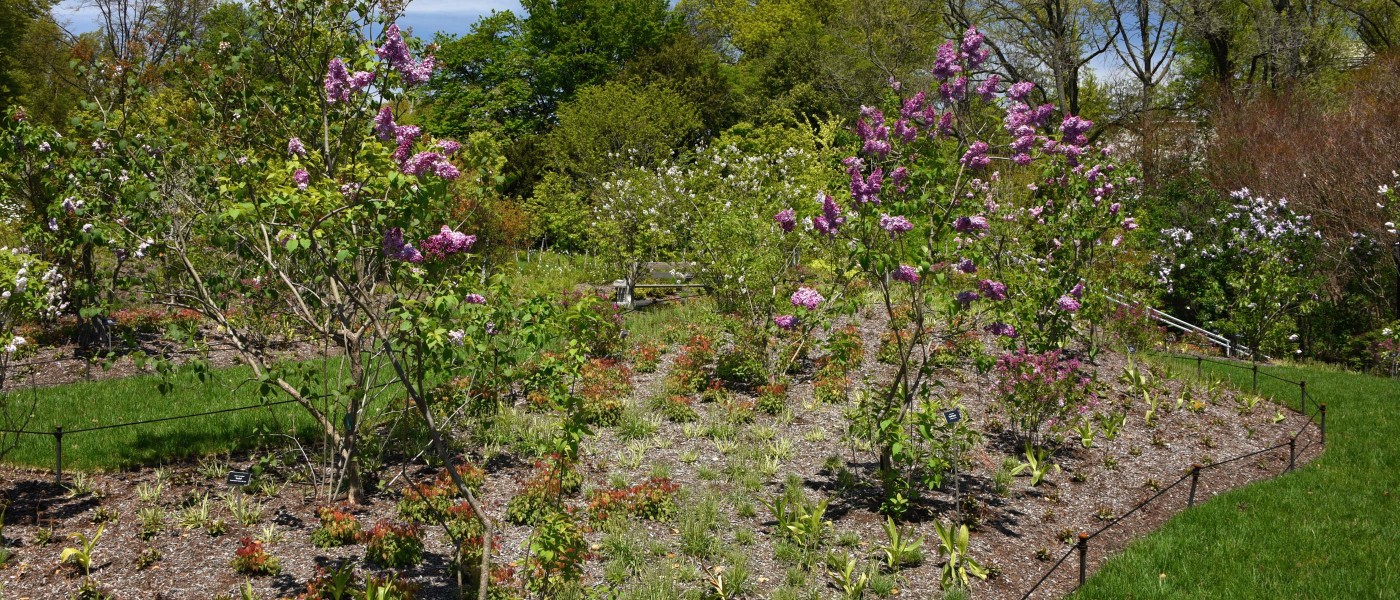Lilacs in Bloom in Their New Home
The Lilac Collection is in bloom for the first spring in its new, more accessible location.
The collection of more than 100 unique plants is made up almost entirely of divisions of the original specimens from the Garden’s historic collection, which was established in 1914.
“It’s taken years of caring for them and transitioning them, and it makes me so happy to see them blooming and growing in their new home now,” says Ronnit Bendavid-Val, the Garden’s director of Horticulture.
“There are lilacs bred in France and in Russia, and there’s a wonderful range of colors—whites, pinks, light purples, deep purples, variegated. There is also a wide range of bloom times, early to late, so the collection blooms in succession. Decades of work went into building this collection, and we want to preserve all of that,” says Bendavid-Val.
The Horticulture department began preparing for the relocation over three years ago, says Bendavid-Val. She and Bill Giambalvo, the collection’s curator at the time, began tracking the plants and identifying sections of each specimen for propagation. Daniel Ryniec, the collection’s curator from 1981 until 2011, was instrumental in developing and maintaining its quality and variety.
The new plants were propagated by division, an asexual reproduction method that horticulturists use to create genetic copies of plants. Lilacs, with their multiple stems, are well suited to this method.
Teams of gardeners began carefully pruning and digging the plants out by hand in the fall of 2016, during their dormancy. Sections of limbs and roots from each plant were separated from the original and potted. The divisions were carefully chosen so they would be substantial enough to take root but not too large for their designated pots. Branches were also selected based on aesthetics. In some cases, entire plants were potted up.
The potted divisions were labeled with their accession numbers and dedication tags and placed at Oak Circle, where they were cared for over the past three years.
Meanwhile, the space was recontoured and incorporated into a new design that allows better access for people of all abilities. Gradually curving and sloped paths lead visitors from the Rose Garden to the new Maple Grove, just below the Osborne Garden. Beds are arranged to display the plants by the era in which the cultivars and hybrids were developed, from pre-1800 lilacs to modern lilacs. Wild species are also included and are placed by the year that they were first described in the scientific literature.
“We really tried to preserve the character of these very old specimens. Old lilacs, in my opinion, have wonderful shapes and forms and sometimes gnarly, ancient-looking wood and bark,” says Bendavid-Val. “Some of the new plants already have a weathered look.”
Included among the early lilacs are 39 bred by famed early 20th-century French breeder Victor Lemoine, known for his double-flowered hybrids. These have two layers of petals on each floret, giving the blossoms a distinctly fuller look. As horticulture trends changed over the last century, different features became more sought after, and the collection features cultivars from a variety of breeders of different eras. Many modern lilacs tend to be smaller to attract home gardeners, and single-stem tree lilacs have also become popular.
“They’re coming along so nicely, a little leggy in their first year, but thriving and with beautiful, wonderfully fragrant blooms this spring. These plants are precious to so many people, we can’t wait until they can come see them finally,” says Bendavid-Val.


